The audit trail is a handy tool to help keep track of all actions that are taken on a specific table in the OPS SQL database. Weather it's the data table or the variable table, the audit trail keeps track of who's changed what and how they changed it. The representation of the audit trail is inside the OPS SQL database. What action is taken is coded as a number that gets Interpreted and translated into a readable form when view the Audit trail in OPS SQL. This article helps you translate the Action code incase you need to use it to write a custom query.
When you view the audit trail for a time stamp that has no data in it, has never had data in it and has thus far been untouched. The audit trail looks like a clean slate.
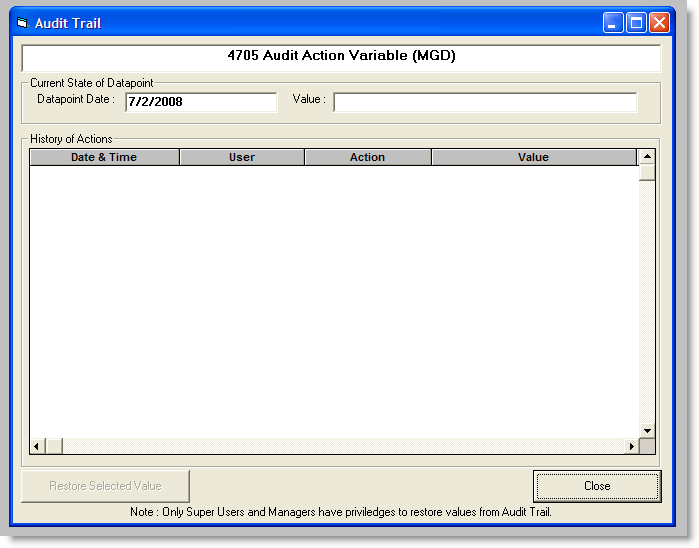
When you insert data for the first time, you can view the audit trail and see that the Action "Data INSERTED"
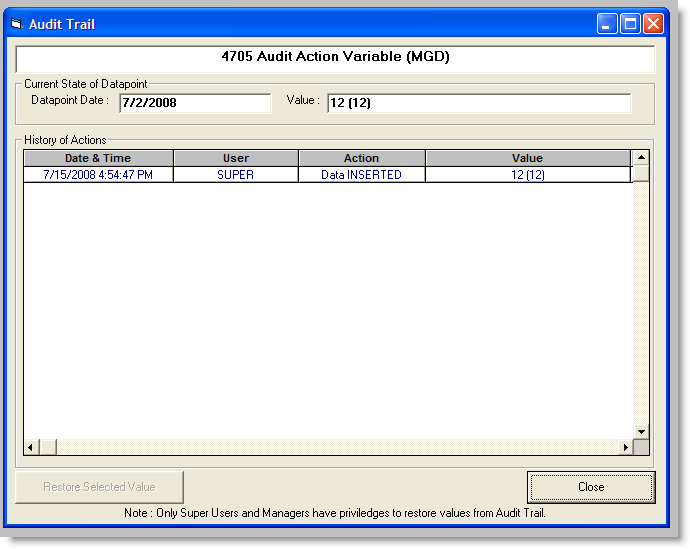
If we query this information from the database, we find that "Data INSERTED" refers to action code 1.
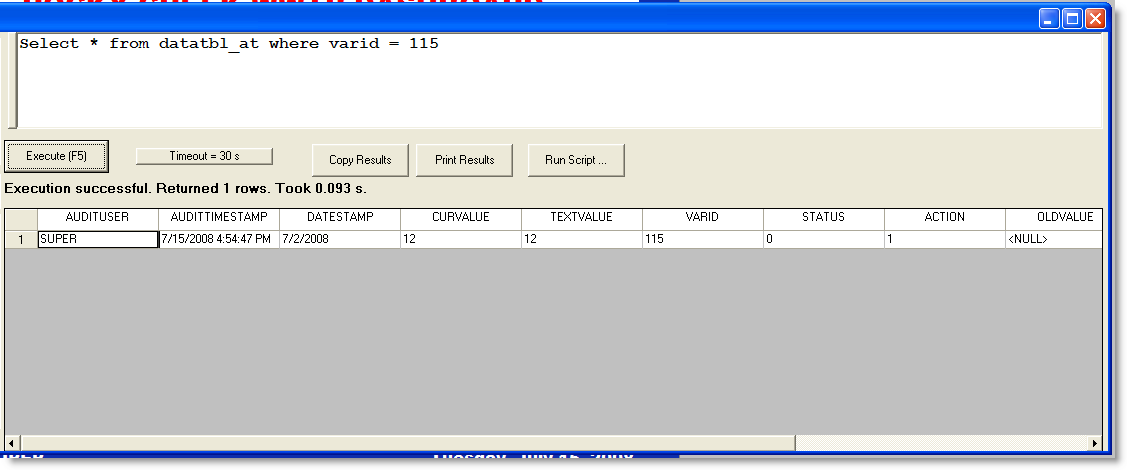
If we modify the data we see that the action is "Data MODIFIED to"
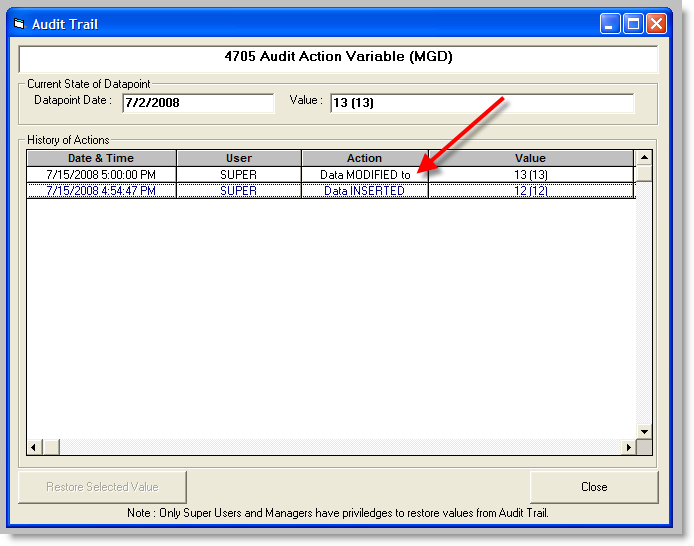
If we Query we find that "Data MODIFIED to" is coded as 2.
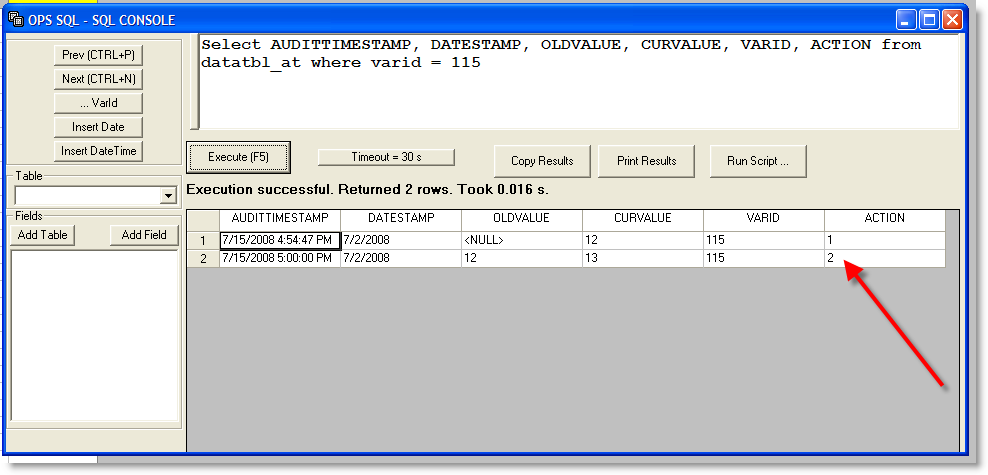
We find that if we restore a number using the audit trail, the same action is taken that is taken from Modified.
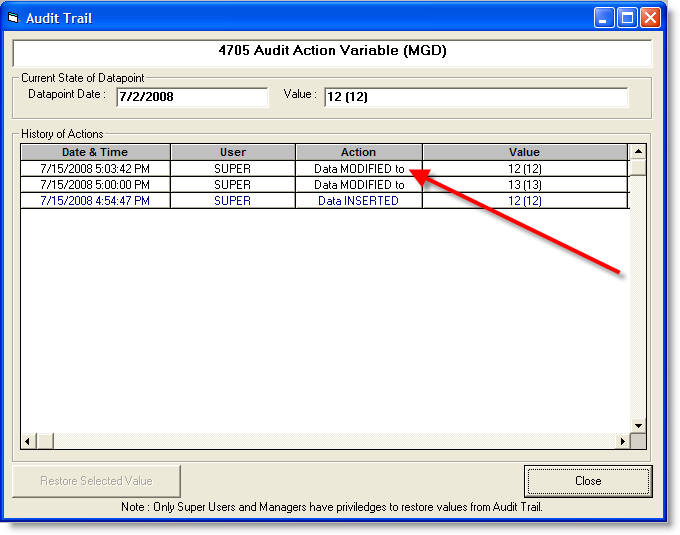
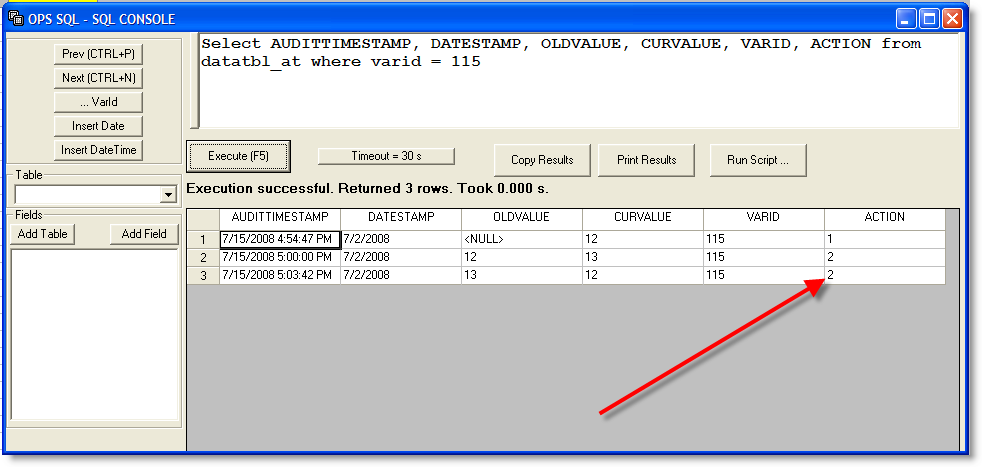
If we delete the info, we see that the action taken is "Data DELETED"
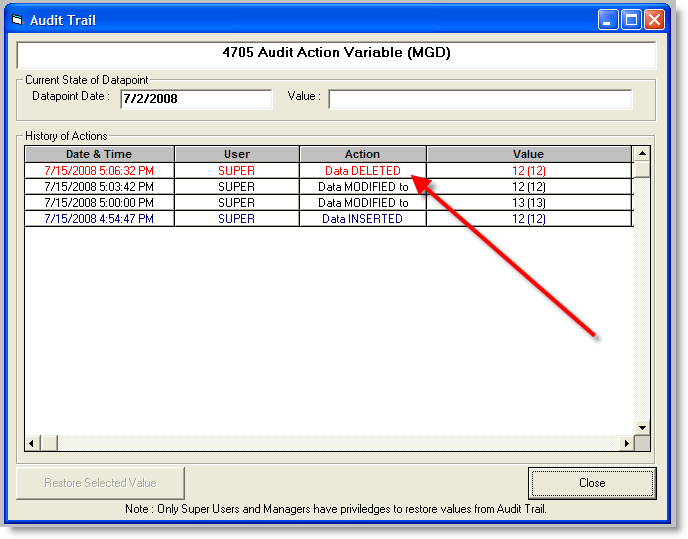
If we run the Query we see that the Action code is 3.
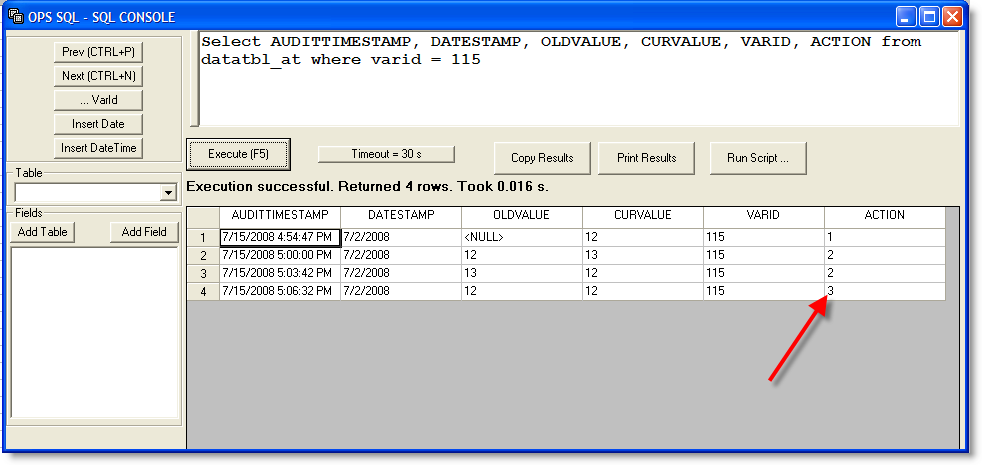
After a Delete if we add info we see that it is "Data INSERTED" which is coded with 1. If we had restored it would also have been "Data INSERTED"
A force data can count as a "Data INSERTED" if the value was empty when first forced, or it can be "Data MODIFIED to" if it is replacing another value.
There are only 3 codes for the actions that the audit trail tracks.
Calculated Variables work in the same fashion.
Put Simply.
"Data INSERTED" = 1
"Data MODIFIED to" = 2
"Data DELETED" = 3